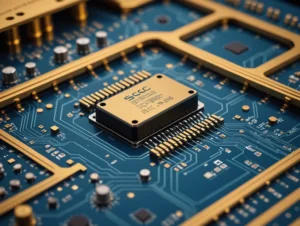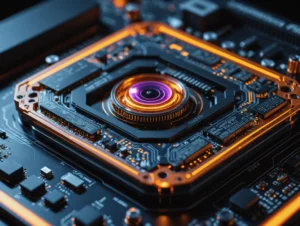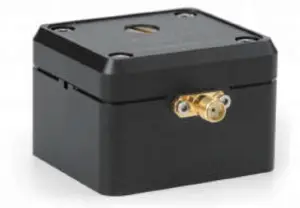Laser linewidth is a measure of the spectral width of a laser, typically specified as the Full Width at Half Maximum (FWHM) of the laser’s frequency or wavelength spectrum. It quantifies how monochromatic the laser is. In the datasheet below, the linewidth is specified as <15 kHz (Lorentzian profile), meaning the spectral width is very narrow and the laser emits nearly pure monochromatic light. how to measure, we will share some tips:
- Center Wavelength: 1550 nm (± 1.0 nm)
- Minimum Nominal Output Power: +33 dBm (2W)
- Linewidth, FWHM, Lorentzian: < 15 kHz
- Optical Isolation: > 30 dB
- Side Mode Suppression Ratio: > 35 dB (45 dB typical)
- Output Power Tuning: 10% to 100% Full Scale
- RIN: <-110 dB/Hz (@100 kHz min.)
- Output Power Stability (8 hours): Better Than +/- 2%
- Wavelength Tuning Range: > +/- 0.02 nm
- Wavelength Stability: +/- 0.005 nm (8 hours)
- Polarization State: Random
- Control Modes: APC (optical power control), ACC (current control)
Methods to Measure Laser Linewidth
There are several methods to measure laser linewidth, depending on the required precision, the type of laser, and the available equipment. Below are the most common techniques:
1. Self-Heterodyne Interferometry
- Principle: The laser signal is split into two parts:
- One part is delayed using a long fiber (to decorrelate phase noise).
- The other part is frequency-shifted using an acousto-optic modulator (AOM) and combined with the delayed signal to create a beat note.
- Equipment:
- Fiber-optic delay line (long enough to ensure decorrelation of noise, typically a few kilometers).
- Acousto-optic modulator (AOM).
- High-speed photodetector and RF spectrum analyzer.
- Output:
- The beat note spectrum provides the linewidth of the laser. The linewidth of the laser is half the width of the measured beat spectrum at the half maximum point.
- Advantages:
- High precision for narrow linewidths (< kHz range).
- Disadvantages:
- Requires long fiber lengths for very narrow linewidths, making it bulky and expensive.
2. Self-Homodyne Interferometry
- Similar to the self-heterodyne method but without a frequency shifter (no AOM).
- Simpler to implement but less accurate for ultra-narrow linewidth lasers.
3. Fabry-Perot Interferometer (FPI)
- Principle: The laser light is passed through a high-resolution Fabry-Perot cavity. The transmission peaks correspond to the laser frequency components.
- Equipment:
- Fabry-Perot etalon with a high finesse (for fine spectral resolution).
- High-sensitivity photodetector.
- Output:
- The FWHM of the transmitted spectrum corresponds to the laser linewidth.
- Advantages:
- Simple to set up.
- Suitable for broader linewidths (> MHz).
- Disadvantages:
- Limited resolution for narrow linewidths.
- Requires a highly stable Fabry-Perot interferometer.
4. Frequency-Resolved Optical Spectrum (Optical Spectrum Analyzer, OSA)
- Principle: The optical spectrum of the laser is directly measured using an Optical Spectrum Analyzer (OSA).
- Equipment:
- OSA with high spectral resolution (< 10 pm or < GHz range).
- Output:
- The FWHM of the spectrum corresponds to the linewidth.
- Advantages:
- Direct and straightforward.
- Suitable for broader linewidths (> GHz).
- Disadvantages:
- OSAs lack the resolution needed for narrow linewidth lasers (< MHz).
5. Coherence Length Measurement
- Principle: The coherence length (LcL_cLc) of a laser is inversely proportional to its linewidth: Δν=c2πnLcDelta nu = frac{c}{2 pi n L_c}Δν=2πnLcc where:
- ΔνDelta nuΔν: Laser linewidth.
- ccc: Speed of light.
- nnn: Refractive index of the medium.
- LcL_cLc: Coherence length.
- Procedure:
- Measure the maximum distance over which the laser light maintains coherence (using an interferometer, such as a Michelson interferometer).
- Advantages:
- Straightforward for experimental setups.
- Disadvantages:
- Requires precise control of distance measurements.
6. Beat Frequency Measurement with a Reference Laser
- Principle: Two lasers are combined, and their frequency difference (beat note) is analyzed. The linewidth of the unknown laser is derived from the beat note.
- Procedure:
- Combine the test laser and a reference laser of known linewidth using a beam splitter.
- Use a photodetector to detect the beat note frequency.
- Analyze the beat note spectrum using an RF spectrum analyzer.
- Advantages:
- Highly accurate when a stable reference laser is available.
- Disadvantages:
- Requires a laser with a narrower linewidth than the laser under test.
Which Method is Best for the Datasheet Laser?
Given the specified linewidth of <15 kHz, a high-precision method like self-heterodyne interferometry or beat frequency measurement with a reference laser would be suitable. These methods can resolve linewidths in the kHz range accurately.
Summary
- Laser linewidth can be measured using self-heterodyne or Fabry-Perot interferometry, optical spectrum analyzers, or coherence length techniques.
- For ultra-narrow linewidths like the one in this datasheet (<15 kHz), self-heterodyne interferometry or beat frequency measurement are the most suitable methods.
- The choice of method depends on the linewidth range and the equipment available.





